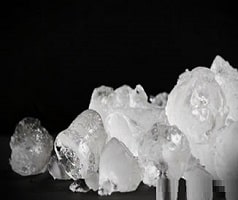Examples of States of Matter
We explain that what are the examples of states of matter? The states of matter are the forms in which substances appear in our reality, and vary according to the conditions to which they are subjected. Four states are currently recognized that can manifest themselves naturally: solid, liquid, gaseous and plasma .
Thanks to constant experimentation, new states of matter have been discovered, which can only appear by means of controlled laboratory devices. It is not possible to interact with them or with the plasma, which resides in the sun, at thousands of degrees of temperature. In our daily life we have contact with three states of matter: solids, liquids and gases .
Properties of states of matter
Each of the states of matter is distinguished by properties that the particles of the substance give it. There is more information about the solid, liquid, and gaseous states, which are the ones that are most frequently manifested around us.
Solid state properties
- Has a certain physical shape
- Its particles are compact and ordered
- It can only scroll if an effort is made
- If left to rest, it does not flow or tend to move
- If heat is applied to it, its particles will start to mess up
- With sufficient heat, it can melt. This temperature is its melting point .
Properties of the liquid state
- Acquires the physical form of the container that contains it
- Its particles are close and in moderate disorder
- If the container is tilted, for example, it tends to shift
- Its displacement is by layers. Groups of particles go on top of others
- If heat is applied to it, its particles will become more disordered
- With sufficient heat, it will boil. This temperature is its boiling point .
- Depending on the liquid, it may tend to constantly evaporate.
- If it is cooled sufficiently, its particles will be arranged more until they reach the solid state. This phenomenon is solidification .
Properties of the gaseous state
- Completely fill the container that contains it
- Its particles are completely disordered
- Flow to places of lower pressure
- If heat is applied to it, its particles will agitate even more.
- If cold is applied, its particles will lose energy and will be sorted
- If it is cooled enough, its particles will reach the liquid state. This phenomenon is called condensation .
Properties of the plasma state
- It is like a gas, but with its electrically charged particles
- It has a great electrical conductivity
- It does not have a definite shape. The container that contains it gives it to you
- It is the state of aggregation of the most abundant matter in the universe
- It is forming the sun and the other stars
Examples of solids
- Table salt
- The sugar
- Quartz
- Gold bars
- Aluminum foil
- The plastic of some utensils
- The role of notebooks
- PVC plastic in pipes
- Polyethylene from garbage bags
- Silicon dioxide desiccant beads
- Coffee beans
- The wax of the extinguished candles
- Screws and nails
- Ice cubes
- Glass
Examples of liquids
- Ethyl alcohol
- Water
- Ethyl ether
- Carbonated water
- Acetone
- The gas
- Chlorophyll
- Milk
- The blood
- The Mercury
- Glycerin
- Glycol (antifreeze)
- Diesel
- Soybean oil
- Corn oil
Examples of gases
- Acetylene
- Natural gas (methane)
- Propane
- Butane
- Helium
- Neon
- Argon
- Krypton
- Xenon
- The air
- Carbon dioxide
- Carbon monoxide
- Hydrogen sulfide (smells like rotten egg)
- Nitrogen
- Sulfur dioxide


